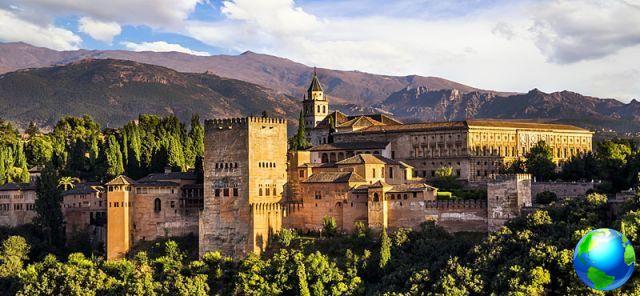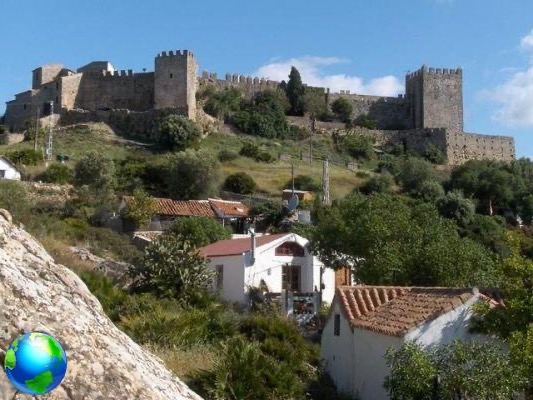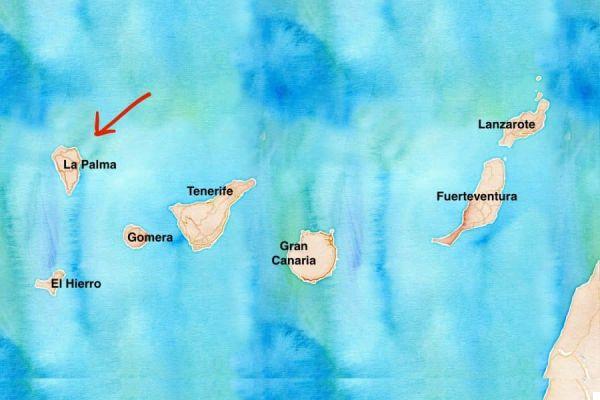
The wonderful and legendary Alhambra of Granada is located on the top of a hill, called La Sabika, and is the symbol of the city and its rich history. Together with the Generalife gardens and the Albaicín, it has been declared a World Heritage Site by Unesco.
In the thirteenth century the Emir's prose they transformed an already existing fortress called al-qala 'al-hamra (red castle) into a fortified complex with a Medina inside, a town of which only the ruins remain today. Later the emirs Yusuf I and Mohammed V added the wonderful Nazaries Palace.
When l'Alhambra went conquered by Christians the Palacio de Carlos V was built, the mosque was replaced by the Iglesia de Santa Maria and the Convento de San Francisco was built. After a period of neglect, in 1870 the Alhambra was declared a national monument and restored thanks also to the interest of some romantic writers such as Washington Irving who described it in the Tales of the Alhambra.
What to see at the Alhambra

Within the high and red walls the marvelous and decorated palaces of the Arab emirs rise from the fortress. In addition to Nazaries Palace and at the Alcazaba, there are also the Palacio de Carlos V, the Iglesia de Santa Maria de la Alhambra, many gardens, hotels, restaurants and souvenir shops.
Alcazaba
Of the ancient citadel only the ramparts and some towers have survived, such as the Torre de la Vela, the Watchtower, from which you can admire a magnificent landscape over the city, the Plain and the Sierra Nevada. In this place in 1492 the banners of the Reconquista were raised.
Nazaries Palace
Il Nazaries Palace it is the most beautiful Arab palace in Europe and consists of three buildings: the Mexuar, the Palacio de Comares, or of Yusuf I, and the Palacio des los Leones, or of Mohammed V. All the buildings are metaphorically united by one element: water, source of life.
Mexico
Il Mexico, a XNUMXth century council chamber, is the gateway to the Palacio Nazaries. From the Mexuar you reach the Patio del Cuarto Dorado, where the emir granted audiences. The Cuarto Dorado, the Golden Room, and the entrance to the Palacio de Comares, recognizable by the facade decorated with tiles, stucco and inlays, overlook the patio.
Palace of Comares
The Palacio de Comares, built for Emir Yusuf I, was the ruler's private residence. At the center of the building is the beautiful Patio de los Arrayanes, the Patio dei Mirti, with its enchanting pool. Inside the Torre de Comares, the building's northern tower, are the Sala de la Barca and the Salon de Comares with their splendid wooden ceilings depicting the seven heavens of Islam.
Palacio de los Leones
From the Patio de los Arrayanes if you access the Palacio de los Leones, built by Mohammed V, which housed the royal harem. In the Patio de los Leones there is a wonderful marble fountain with the 12 lions mouths. The palace represents the Islamic paradise, divided by the four channels that convey the water into the fountain.
From the Patio you enter four rooms: Sala de los Abencerrajes, where the killing of the Abencerraj family took place, the Sala de los Reyes, with decorated and frescoed leather ceilings, the Sala de Dos Hermanas, with a marble fountain and famous muqarnas dome, and finally the Sala de los Ajimeces, the chamber of the Emir's favorite.
From the Sala de Dos Hermanas you can reach the Estancias del Emperador, built for Charles I. Through the Patio de la Reja and the Patio de Lindaraja you reach the Jardines del Partal, where there are wonderful terraces. From the Jardines you can leave the Alhambra or visit the Generalife.
Palace of Carlos V
The majestic and square Renaissance Palacio de Carlos V was begun in 1527 by the Toledo architect Pedro Machuca but was never completed. Inside there is a beautiful circular courtyard with two superimposed orders, supported by 32 columns, and two museums. On the ground floor is the Museo de la Alhambra, which houses Arab artifacts from the province of Granada and Cordoba, including the elegantly decorated Alhambra Vase, on the upper floor is the Museo de Bellas Artes and its wonderful collection of paintings and sculptures, such as the Virgin and Child by Diego de Siloé.
Other buildings
Inside the Alhambra there are also numerous mostly Christian buildings such as the Iglesia de Santa Maria, built in the XNUMXth century where the Arab mosque once stood, and the Convento de San Francisco now converted into a hotel.
Generalife Gardens
The gardens of the Generalife is the conclusion of the Alhambra tour: a relaxing walk among paths, ponds, fountains, hedges and flowers. In the Generalife there is also the summer residence of the Arab rulers, with the beautiful Patio de la Acequia, where there is a nineteenth-century fountain, and the Jardin de la Sultana, with a cypress trunk of about 700 years.
To the east of the Alhambra fortress in Granada, on the Cerro del Sol hill, are the villa and the magnificent gardens of the Generalife, declared a World Heritage Site by Unesco in 1984. This former rural residence of the emirs of the Nasrid dynasty, built in the mid-XNUMXth century, has large gardens full of water features, light reflections, roses, carnations, willows, palm trees and cypresses that give life to a real earthly paradise.
Beauty and harmony dominate the Garden of the Generalife which has its heart in the Patio of the Acequia where a gentle music is created by the jets of water. The Sierra Nevada mountains form the backdrop to this wonderful place that host the famous Granada International Music and Dance Festival in the open-air theater.
Stroll along the porch with its 18 arches or along the Viewpoint with the 5 arcate, admire the beautiful capitals and magnificent stuccoes on the premises of the palace, admire the Patio de la Sultana, the Patio de los Cipreses, with a swimming pool in the center, and the Jardines Altos with its jasmine scent.
The distribution of the small ponds, fascinating with their frames of oleander and myrtle, and the two groups of buildings connected by the Patio de la Acequia will win you over with their intimate and quiet atmosphere, the same that the kings sought when they retired to escape the hectic court life.
Entrance tickets to the Alhambra
The Alhambra is themost visited attraction in Granada and one of the most visited in all of Spain, to visit it you need to buy an entrance ticket or take part in a guided tour. There are different types of tickets: choose the one that's right for you! We advise you to visit it anyway in the moments of less crowds, that is in the early morning or late afternoon.
Skip-the-line ticket to the Alhambra
Given the large influx of visitors who flock to the Alhambra ticket offices every day, we recommend that you book your tickets in advance directly online by clicking on the box below. By purchasing the ticket online it will be possible avoid the queues at the ticket offices and you are sure of the visit on the appointed day, since the entrances are limited daily.
When purchasing online, pay attention to the booking time of the visit to the Nazaries Palace.
Skip-the-line ticket + audio guide
If, in addition to the entrance ticket, you also want to take advantage of an audio guide in English that will allow you to discover every detail of the Alhambra in total autonomy, book the ticket below.
Ticket + guided tour of the Alhambra
Alternatively, to find out all about Granada's masterpiece, you can be accompanied by one expert guide during your visit. The cost is slightly higher of the admission ticket and also by purchasing this visit you will save time by avoiding queuing at the ticket office.
Alhambra opening hours
The Alhambra is open every day, from Monday to Sunday, at the following times, depending on the time of year. It is closed on December 25th and January XNUMXst.
Winter time, from 15 October to 31 March
- Day visit from 8.30 to 18
- Night visit from 20pm to 21.30pm
Summer Schedule, from April 1st to October 14th
- Day visit from 8.30 to 20
- Night visit from 22pm to 23.30pm
How to get to the Alhambra

The entrance to the Alhambra can be reached by bus from Plaza Nueva. Lines 30 and 32 depart every 10 minutes.
If you arrive by car from the ring road heading south you must follow the signs for the Alhambra car parks, at Avenida de los Alixares, and then reach the entrance on foot.
If you want to walk to the Alhambra from Plaza Nueva take the Cuesta de Gomérez climb up to the Puerta de las Granadas, Porta delle Pomegranate, built by Charles I. From this point, if you already have an entrance ticket, you can continue to Cuesta Empredrada and enter from the majestic Puerta de la Justicia, the main entrance to the Alhambra built in 1348, or continue for about one kilometer to Avenida de los Alixares and reach the ticket office.
From the Pabellon de Acceso, the access pavilion, you enter the Generalife directly and from here you can reach the other sectors of the Alhambra.


























